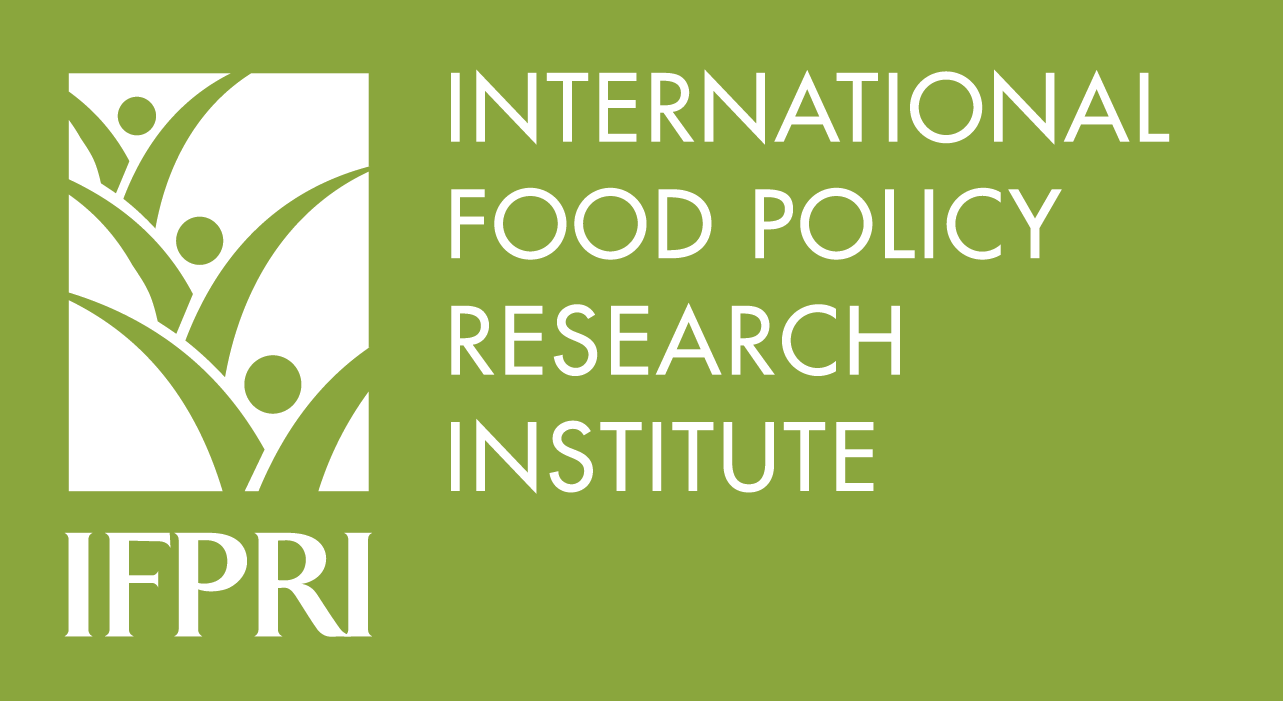Focal point
Location
About IFPRI
The International Food Policy Research Institute (IFPRI) provides research-based policy solutions to sustainably reduce poverty and end hunger and malnutrition in developing countries. Established in 1975, IFPRI currently has more than 500 employees working in over 50 countries. It is a research center of theCGIAR Consortium, a worldwide partnership engaged in agricultural research for development.
Vision and Mission
IFPRI’s vision is a world free of hunger and malnutrition. Its mission is to provide research-based policy solutions that sustainably reduce poverty and end hunger and malnutrition.
What We Do
Research at IFPRI focuses on six strategic areas:
- Ensuring Sustainable Food Production: IFPRI’s research analyzes options for policies, institutions, innovations, and technologies that can advance sustainable food production in a context of resource scarcity, threats to biodiversity, and climate change. READ MORE
- Promoting Healthy Food Systems: IFPRI examines how to improve diet quality and nutrition for the poor, focusing particularly on women and children, and works to create synergies among the three vital components of the food system: agriculture, health, and nutrition. READ MORE
- Improving Markets and Trade: IFPRI’s research focuses on strengthening markets and correcting market failures to enhance the benefits from market participation for small-scale farmers. READ MORE
- Transforming Agriculture: The aim of IFPRI’s research in this area is to improve development strategies to ensure broad-based rural growth and to accelerate the transformation from low-income, rural, agriculture-based economies to high-income, more urbanized, and industrial service-based ones. READ MORE
- Building Resilience: IFPRI’s research explores the causes and impacts of environmental, political, and economic shocks that can affect food security, nutrition, health, and well-being and evaluates interventions designed to enhance resilience at various levels. READ MORE
- Strengthening Institutions and Governance: IFPRI’s research on institutions centers on collective action in management of natural resources and farmer organizations. Its governance-focused research examines the political economy of agricultural policymaking, the degree of state capacity and political will required for achieving economic transformation, and the impacts of different governance arrangements.
Research on gender cuts across all six areas, because understanding the relationships between women and men can illuminate the pathway to sustainable and inclusive economic development.
IFPRI also leads two CGIAR Research Programs (CRPs): Policies, Institutions, and Markets (PIM) andAgriculture for Nutrition and Health (A4NH).
Beyond research, IFPRI’s work includes partnerships, communications, and capacity strengthening. The Institute collaborates with development implementers, public institutions, the private sector, farmers’ organizations, and other partners around the world.
Resources
Displaying 21 - 25 of 1521Contract farming, productivity and fertilizer usage: Empirical evidence from specialty crop production
This study investigates the impact of contract farming (CF) in baby corn production on yield, irrigation costs, fertilizer costs and usage of chemical fertilizer. We find that adoption of CF by baby corn smallholders, after controlling for characteristics of both control and treatment groups, leads to higher yields and lower spending on fertilizers and irrigation. Additionally, CF in baby corn farming leads to a reduction in the use of chemical fertilizers (Urea and DAP).
Cropland expansion in Ethiopia: Economic and climatic considerations for highland agriculture
Agricultural GDP in Ethiopia grew at an average 7.3 percent per year between 2001/02 and 2012/13. Most of this dynamism occurred in the highlands, where high population density and land scarcity begs the question of how future agricultural output can be maintained to sustain the previous decade’s momentum. This paper uses a spatial regression approach to calculate the maximum crop area potential of each kebele in Ethiopia. We find that although the highlands have a greater potential for cropped area, there is little room to expand.
Using natural areas and empowering women to buffer food security and nutrition from climate shocks: Evidence from Ghana, Zambia, and Bangladesh
As climate change makes precipitation shocks more common, policymakers are becoming increasingly interested in protecting food systems and nutrition outcomes from the damaging effects of droughts and floods (Wheeler and von Braun, 2013). Increasing the resilience of nutrition and food security outcomes is especially critical throughout agrarian parts of the developing world, where human subsistence and well-being are directly affected by local rainfall.
Farm and family balance project: Evidence from Uganda
This project tests two approaches to increasing women’s integration into and returns from cash crop value chains. We aim to determine whether these interventions affect intrahousehold allocation of resources, decision-making power, consumption and investment, productivity of the cash crop at the household level, and success of contract ful-fillment for the buyer of the crop.
Cropland expansion in Ethiopia: Economic and climatic considerations for highland agriculture
Agricultural GDP in Ethiopia grew at an average 7.3 percent per year between 2001/02 and 2012/13. Most of this dynamism occurred in the highlands, where high population density and land scarcity begs the question of how future agricultural output can be maintained to sustain the previous decade’s momentum. This paper uses a spatial regression approach to calculate the maximum crop area potential of each kebele in Ethiopia. We find that although the highlands have a greater potential for cropped area, there is little room to expand.






